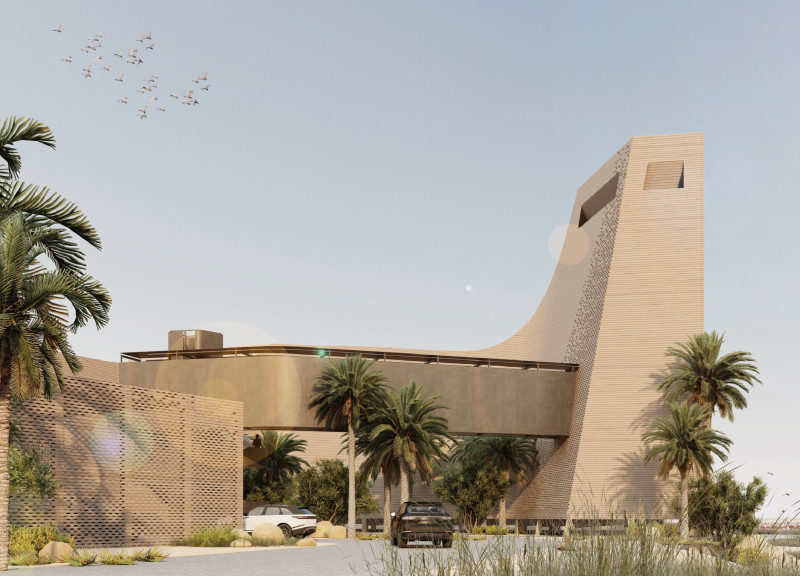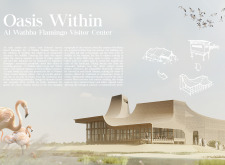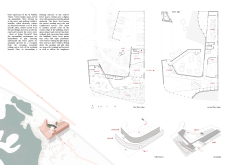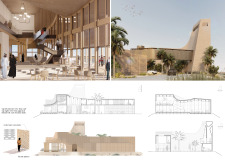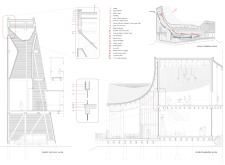5 key facts about this project
Design and Spatial Organization
The architectural design emphasizes a seamless integration with the landscape, encouraging engagement with both the environment and local wildlife. The visitor center features an open courtyard that serves as the focal point, linking various functional areas such as exhibits, cafés, and educational facilities. This layout promotes interaction between visitors and the surrounding ecosystem. The dynamic spatial organization allows for multiple experiences within the center, from quiet observation spaces to vibrant community gathering areas.
The structure is primarily constructed using local palm wood, concrete, metal, and glass. These materials ensure durability while also maintaining a connection to the local culture. Large windows provide natural light and expansive views of the wetlands, fostering a sense of immersion in nature. The design incorporates passive cooling techniques, utilizing natural ventilation to minimize reliance on mechanical systems, which is vital in the hot desert climate.
Unique Design Approaches
The Al Wathba Flamingo Visitor Center employs innovative architectural strategies that distinguish it from typical visitor centers. The layered façade design not only provides aesthetic variety but also regulates light and airflow, enhancing the visitor experience. The structure adopts the form of a contemporary interpretation of traditional Bedouin tents, embodying cultural references while meeting modern needs.
Additionally, the project prioritizes environmental sustainability through its site-specific design. Careful consideration of the surrounding ecology influences the layout and function of the center. Informative exhibits showcase the importance of the wetlands, directly linking the visitor experience with broader conservation efforts. The integration of nearby pathways leads visitors through the landscape, further encouraging interaction with the natural environment.
For further insights into the Al Wathba Flamingo Visitor Center, including architectural plans, sections, and detailed designs, explore the project presentation to gain a deeper understanding of its architectural ideas and innovative features.


